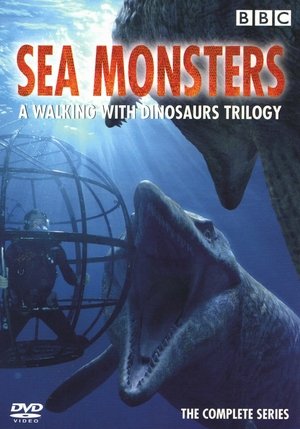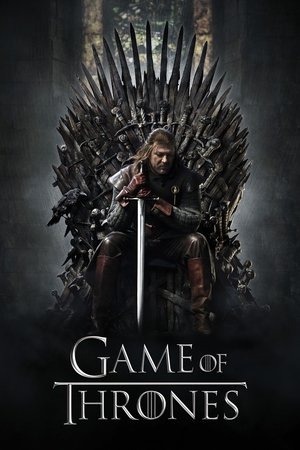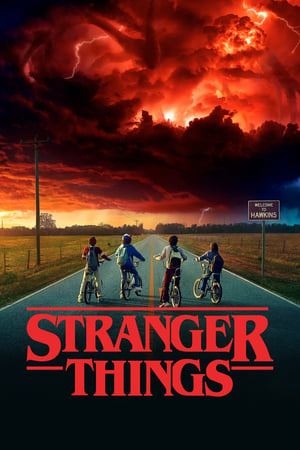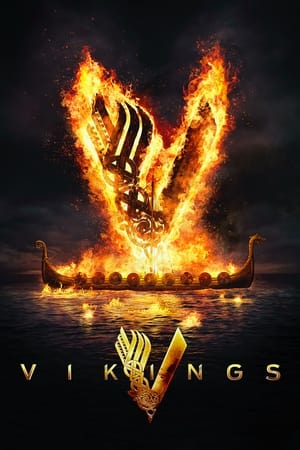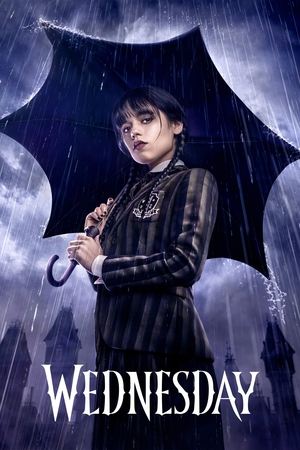2002-04-02
The opening episode serves as an introduction to the series, featuring many clips from later episodes and giving an overview of the series. It opens by discussing which animals (such as the big cats and bears) will disappear in a few thousand years and explains that evolution will continue. It is also the only episode to touch upon the absence of humans in the future. It does not, however, explain what will have happened to the human race. The creators said that it was up to the viewers to make their own assumptions about the fate of mankind.
2002-04-09
The episode is set in North Europe, 5 million years into the future. The episode focuses on three hypothesized species: (1) Shagrat, a descendant of the marmot that has grown in size and developed thicker fur and a smaller nose to protect it from the cold; (2) Snowstalker, a descendant of the wolverine that has evolved sabre-teeth and white fur for camouflage; (3) Gannetwhale, a descendant of the gannet which has grown to immense size to replace the sea mammals. The episode explains that the onset of the ice age was very fast, so many animals died out. The ones that did survive had to have quick generations so they evolved fast. This is why rodents were successful. The episode follows the story of a female Snowstalker teaching her cubs to hunt, the Gannetwhale's breeding season and the mass migration to the south of the Shagrats.
2002-04-16
The episode is set in what was the Mediterranean sea in 5 million years time. It features four species: (1) Cryptile, a lizard with a sticky frill to catch flies which it can then lick off at its leisure; (2) Scrofa, a descendant of the wild boar which has developed spindly legs to allow it to live on the rocky islands in the desert; (3) Gryken, a descendant of the pine marten which hunts Scrofa in the cracked rocks of the landscape; (4) brine flies (live-acted). Before this time in the future, the tip of Africa has collided with the southern tip of Spain, thus enclosing the Mediterranean inland. It has since dried up to become an enormous salt desert with a few lakes of ultra-saline water, as it was during the Messinian salinity crisis. The holiday islands that used to be in the sea are now mountains scattered throughout the desert.
2002-04-23
The episode is set in South America where the Amazon used to stand in 5 million years time. It features three species: (1) Carakiller, a descendant of the mountain caracara which has evolved to replace land predators; (2) Babookari, a descendant of the uakari which lives like baboons and has discovered how to catch fish; (3) Rattleback, a descendant of an agouti which has developed tough armour and can live through quickly-passing grass fires.
This episode shows that due to the cooling of the planet, the Amazon rainforest has vanished and has been replaced by grassland. Most primates have died out but the Babookari has evolved to live on the plains. They have also become much cleverer and can now make nets out of twigs to catch fish. There is also the rattleback, a heavily armoured rodent which is somewhat fireproof, and lives on a diet of Carakiller eggs, grass stems, and tubers. The episode also shows the biggest danger to these animals - fire.
2002-04-30
The episode is set in North America, 5 million years into the future. The episode focusses on three species: (1) Deathgleaner, a massive carnivorous false vampire bat that spends the day hunting for prey in the desert and spends the night in a communal roost; (2) Spink, a descendant of the quail whose wings have become digging blades. The species lives much like the naked mole-rat of our time; (3) Desert Rattleback, a descendant of the agouti, when lives in the cold regions. The episode explains that the onset of the ice age caused the agricultural belt of the USA to turn into a desert where temperatures at night regularly reach freezing. The episode shows how the animals have evolved to cope with the harsh features of this forbidding landscape.
2002-05-07
The episode is set in the Bay of Bengal, 100 million years into the future. The episode focuses on three species: (1) Toraton, a descendant of the giant tortoise and the largest creature ever to walk the Earth. They can weigh up to 120 tonnes; (2) Swampus, a descendant of the octopus which has formed a symbiotic relationship with a plant to house its young. They are very intelligent; (3) Lurkfish, a descendant of the electric catfish that can fire up to 1000 volts to stun prey. They are ambush predators. The episode shows that at this point of the future, volcanoes are belching out copious amounts of greenhouse gases causing the planet to overheat. It shows how swampus breed and how toraton have evolved to cope with their new size.
2002-05-14
The episode is set in shallow seas of Paris, 100 million years into the future. The episode focuses on three species which all live together: (1) Ocean Phantom, a type of portuguese man-of-war that can grow to ten metres in diameter; (2) Reef Glider, a descendant of the sea slug which hunts ocean phantoms. The young, however, are prey to the ocean phantom; (3) Spindle Trooper, sea spiders that live in chambers on the Ocean Phantom and protect it from danger. The Ocean Phantom in return feeds it. This episode focuses on the extinction of the coral reefs and their replacement with red algae reefs. It shows how this food chain works and how the animals have evolved together. It also shows how Ocean Phantoms can be ripped apart by a severe storm but still carry on living.
2002-05-21
The episode is set in Antarctica, 100 million years into the future. The episode focuses on five species: (1) Roachcutter, a descendant of an undisclosed sea bird and one of the first species to colonise Antarctica. It feeds on the insects of the forest and flies incredibly fast and with brilliant agility; (2)Falconfly, a descendant of the wasp which preys on the Roachcutter and other birds; (3) Spitfire Bird, a descendant of an undisclosed sea bird which collects chemicals from flowers of the Spitfire tree which it then spits at enemies such as the Falconfly; (4) Spitfire Beetle, a beetle or mantis that gathers in groups of four to take on the appearance of a Spitfire flower; (5) False Spitfire Bird, an undisclosed sea bird that looks almost identical to the other spitfire bird but cannot fire chemicals. At this point in the future, Antarctica has moved so far north it is now on the equator and has grown a tropical jungle.
2002-05-28
The episode is set in a lofty plateau created by the collision of Australia (who moved northward) against Japan and Kamchatka (the Asian tectonic plate), 100 million years into the future. The episode focuses on four species: (1) Silver Spider, a descendant of our spiders, the silver spiders live in huge colonies and have a caste system based on the size of the animal. They build massive webs across canyons; (2) Poggle, a descendant of the hamster and the last species of mammal on Earth at this time, prey to silver spiders; (3) Great Blue Windrunner, a brilliant blue bird with wings on its legs which sees in ultraviolet and lives at the highest points on the plateau; (4) Grass Trees, Tree-like plants descended from bamboo.
This episode shows how this bizarre food chain works
2002-06-04
The episode is set in the central desert of the new Pangea, 200 million years into the future. At this point in the future, there are no mammals, birds, reptiles or amphibians. The episode focuses on four species: (1) Terabyte, descendants of termites that live in massive air-conditioned underground cities where they farm algae. Each termite is built for a specific role. There are transporters, glue-spitters, diggers and other types too, which form a caste system. (2) Gloomworm, a simple worm that is descended from a single type of bristleworm which survived the mass extinction. (3) Slickribbon, a transparent creature with pincer jaws and a nasty sting. It appears to be descended from the same bristleworm as the Gloomworm. (4) Garden Worm, a descendant of the convoluta worm, the garden worm houses green algae in fleshy lobes that stick out like leaves from their backs. The algae convert sunlight into food to feed their host
2002-06-11
The episode is set in 1 massive super ocean in the world, 200 million years into the future. At this point in the future, there are no mammals, birds, reptiles or amphibians. The episode focusses on four species: (1) Rainbow Squid, a massive squid which changes colour to hide and which did not take to the land unlike some cephalopods; (2) Flish, descendants of cod which have evolved to breathe out of water and have developed wings; (3) Sharkopath, a descendant of sharks that have bioluminescent patches on their sides to communicate with one another; (4) Silverswimmer, descendants of crustaceans that have grown in size and evolved to fill the roles that fish previously held. There are many different species and they have different ways of life. Some are predators, some are prey and some are scavengers. Since all the land is joined together, much like Pangea, there is only one ocean now as well. Some views from space show the Earth as just a blue circle now.
2002-06-18
The episode is set in a rainshadow desert on the eastern side of Earth's only continent, 200 million years into the future. Wedged between this desert and the Global Ocean is a series of very tall mountain ranges which are tall enough to block even the most powerful storms. At this point in the future, there are no mammals, birds, reptiles or amphibians. The episode focuses on five species: (1) Bumblebeetle, a species of beetle that has been pushed to the edge of specialisation. They spend their lives searching for dead flish which are a good food source for their young. (2) Desert Hopper, a bizarre rabbit-sized cone snail that hops about on one muscular foot. They tend to bury themselves during the heat of the day and only come out at the cool of the night. (3) Deathbottle, a carnivorous plant, that has traps to feed on the Desert Hoppers. (4) Flish, shown dead, animal from the previous episode. (5) Grimworm, a worm, live inside dead Ocean Flish body and scavenging it.
2002-06-25
The episode is set in the northern forest, 200 million years into the future. At this point in the future, there are no mammals, birds, reptiles or amphibians. There are very few fish. The episode focuses on five species: (1) Lichen Trees, a group of species evolved from simple lichens. Some species are small bushes while others are giant tree like creatures. (2) Forest Flish, a smaller species of flish with hooks for feet so it can hang upside down on tree branches to rest. (3) Megasquid, a five-metre-tall (16 ft) squid with rhino-like skin and three-metre tentacles which patrols the forest. Its eight boneless legs are packed with muscles that act like bones. (4) Squibbon, an arboreal species of squid that swing through trees and have stereoscopic vision. The Squibbon could well be the next sapient life on the planet and create new civilization. (5) Slithersucker, an arboreal species of giant slime mold. Predatory by nature and reproduces by taking control of huge Megasquids.

